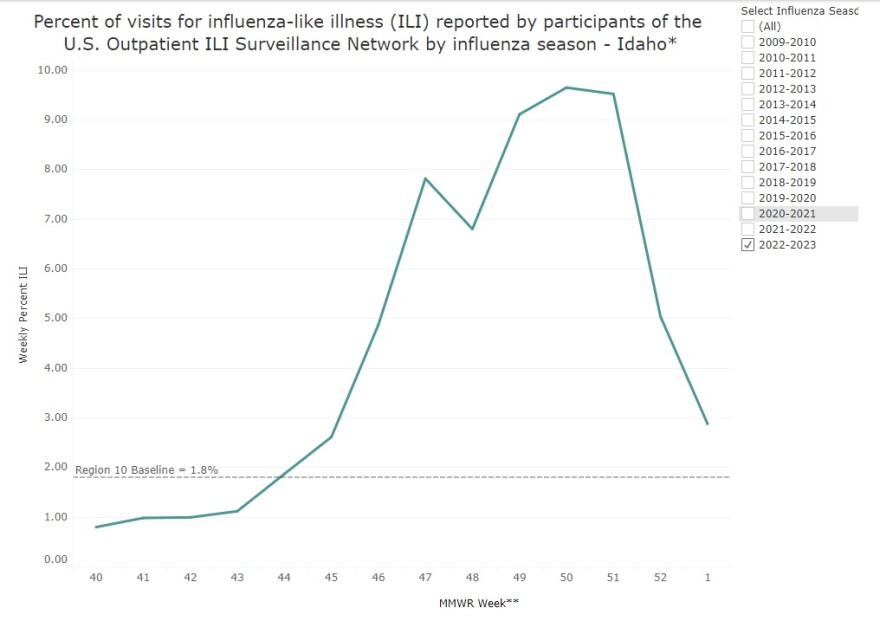Washington and Idaho began the new year in the same fashion they ended the old: with flu and RSV cases dropping, and coronavirus cases remaining low.
The potential “tripledemic” had not materialized, according to reports from the Washington Department of Health and the Idaho Department of Health and Welfare, though respiratory virus season is far from over.
The week of January 1 through 7, three Washingtonians died from the flu, the lowest weekly total reported since early November. The state’s death toll reached 147 people, higher than the entire 2019-20 flu season, but lower than the 2017-18 and 2018-19 seasons.
In Idaho, eight people died, bringing the season-to-date total to 38. 12 of those people were from the public health district that includes Idaho’s five Panhandle counties. It is the highest death toll among Idaho’s seven public health districts.
Data from the two states showed reported flu cases and hospital visits motivated by flu-like symptoms continued to fall after peaking in November and December.

About three percent of hospital visits in Idaho were for flu-like symptoms, above the seasonal baseline of 1.8 percent, but much lower than the nearly 10 percent reported in the second week of December. Likewise in Washington, hospital visits for flu-like illness fell to three percent in the first week of January. The peak was more than ten percent in late November.
The data appear to support the thinking of Washington’s state epidemiologist for communicable diseases, Dr. Scott Lindquist. In a December conversation with Spokane Public Radio, Lindquist said the flu typically has two peaks. This year’s initial peak was sudden and severe. Lindquist cautioned that flu cases usually have a second wave later in the season.
RSV cases are also falling. That virus, which particularly affected children, peaked in mid-September in Idaho and remained relatively high through late November, when cases began to recede consistently. RSV peaked in Washington in October, and began falling almost immediately after.
Community transmission levels of coronavirus remain low in most of eastern Washington and north Idaho. A new variant spreading in the northeastern United States, BQ.1.1, has yet to make inroads in the Pacific Northwest.
The latest summary from the Spokane Regional Health District said the coronavirus case rate for the county was 66 per 100,000 people, well below the CDC’s threshold for low community transmission. Hospitalization rates also remain low. Three people in Spokane County died from Covid in the first week of January, bringing the pandemic total to 1,547.


